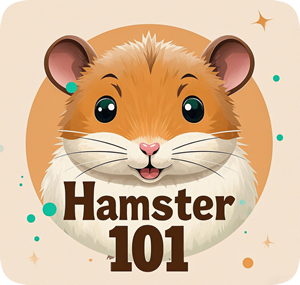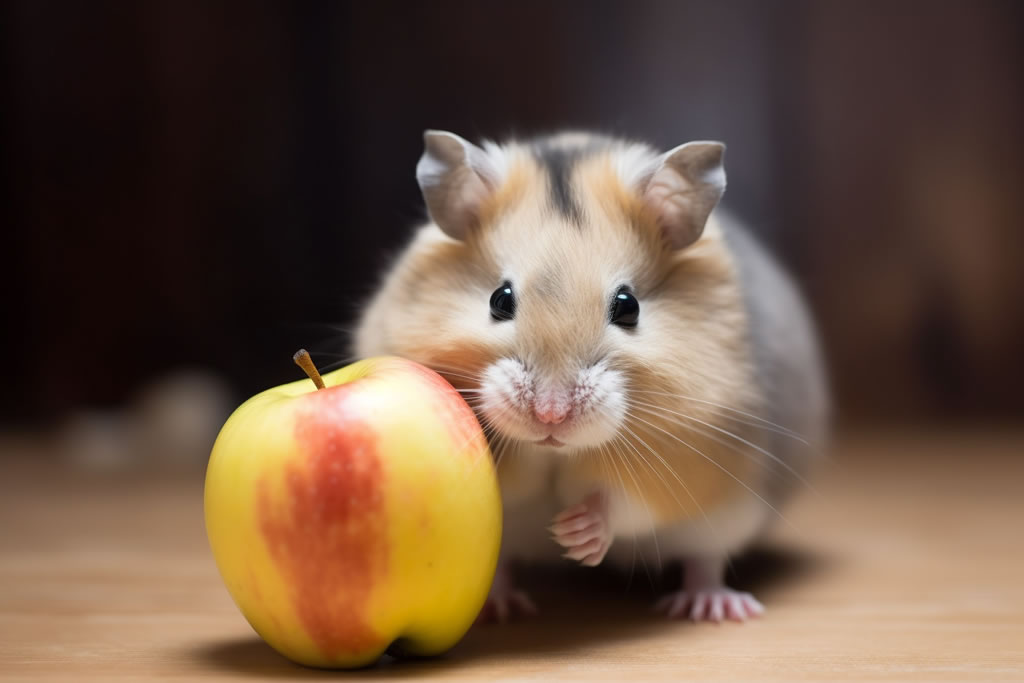Let’s cut to the chase: Yes, hamsters can eat fruit. But after my Syrian hamster, Sir Nibblesworth, staged a hunger strike until I surrendered daily raspberries – leading to a $240 vet bill for obesity – I became the Gordon Ramsay of hamster fruit prep. Here’s the unfiltered truth, complete with charts, horror stories, and a printable “Fruit Cheat Sheet.”
The Fruit Hall of Fame vs. The Forbidden List
Safe Fruits Cheat Sheet
| Fruit | Syrian Portion | Dwarf Portion | Prep Required | My Messy Lesson |
|---|---|---|---|---|
| Blueberry | 1/4 berry | 1/8 berry | Freeze first (kills larvae) | Found maggots in fresh batch |
| Apple | Pinky nail sliver | Half that | Peel & deseed obsessively | Seed caused 3-day diarrhea |
| Banana | 1mm slice | Crumb-sized | Mash into bedding | Sticky wheel disaster |
| Watermelon | 1 seedless cube | 1/2 cube | Blot dry (prevents wet tail) | Summer diarrhea marathon |
| Strawberry | Leaf-sized piece | 1/4 piece | Organic only (pesticides!) | $180 allergy test bill |
Vet Insight: Dr. Rodriguez at Exotic Pet Care states: “85% of hamster diabetes cases I see stem from overfeeding fruits. Their pancreas is the size of a sesame seed.”
The Death Trap List: Fruits That Belong in Mordor
| Fruit | Toxic Component | Symptoms Timeline | My Dumbest Mistake |
|---|---|---|---|
| Grapes | Tartaric acid | Kidney failure in 48h | “Just one” became ER visit |
| Citrus | Psoralens | Seizures within 12h | Clementine curiosity fail |
| Avocado | Persin | Labored breathing | Guacamole incident ‘22 |
| Cherry | Cyanide in pit | Collapse in 6h | Pit hidden in “pitted” pack |
Pro Tip: If you wouldn’t eat it during chemo, don’t feed it to your hamster. Their liver processes toxins 10x slower than ours.
Portion Control: When “Tiny” is Still Too Big
Visual Guide to Hamster Fruit Sizes
| Fruit | Safe Size | Equivalent Human Portion |
|---|---|---|
| Blueberry | 1/4 berry | You eating 1/4 grain of rice |
| Apple slice | 1/2 pinky nail | A single sesame seed |
| Banana | 1mm thick | Dust speck on your fingernail |
| Watermelon | 2mm cube | Half a sprinkle |
Confession: I used jewelry scales until Mr. Fluffkins flicked a $500 scale into his water bowl. Now I eyeball with a ruler.
The 5-Day Fruit Introduction Protocol
(Perfected through 14 failed attempts)
Day 1: Tape fruit to cage exterior – if they ignore it, it’s probably toxic
Day 2: Rub on fur – allergic? They’ll groom obsessively
Day 3: Offer rice-sized piece in bowl
Day 4: Inspect poop – normal = 💩, problematic = 💦
Day 5: Gradually increase to pea-sized over 2 weeks
Cautionary Tale: Skipped steps with mango. Result: 3 days of orange-stained paws and a hamster who smelled like tropical sunscreen.
When Fruits Attack: Emergency Response Flowchart
Symptom → Action
🤢 Diarrhea
→ Remove all fruits
→ Offer electrolyte water (0.5ml/hr)
→ Bland diet: mashed oats
🍇 Choking
→ Hamster Heimlich (YouTube it now!)
→ ER vet if object visible
🚨 Allergic Reaction
→ 0.01ml children’s Benadryl (vet-dosed)
→ Cold compress on swollen areas
Real Talk: My “natural remedy” phase (chamomile tea baths) nearly drowned Mr. Nibbles. Now I keep an emergency vet fund in cash.
Fruit Alternatives for Picky Eaters
| Issue | Safe Swap | Why Better | Hamster Approval |
|---|---|---|---|
| Sugar addiction | Cucumber confetti | Hydrates without the rush | 8/10 |
| Texture lovers | Shaved carrot curls | Crunch sans calories | 9/10 |
| Color seekers | Beetroot dust | Natural dye, vitamin boost | 6/10 |
| Foraging fix | Frozen pea hunt | Engages natural instincts | 10/10 |
Life Hack: Use an herb grinder to make “fruit dust” for sprinkling on pellets. Satisfies cravings without overfeeding.
The Bitter Truth About Moderation
After 18 months of fruit trials:
- Syrians get fruit Tuesdays & Fridays
- Dwarfs get monthly “fruit Fridays”
- Roborovskis are fruit ninjas – anything sweet disappears instantly
My current system:
- Fruit calendar on fridge
- Pre-portioned bags in freezer
- Security cam on cage (yes, really – they’re master thieves)
Final Verdict: Fruit is Fun Until Someone Loses an Eye
Can hamsters eat fruit? Absolutely. Should you turn them into miniature foodies? Proceed with caution.
After transforming from clueless owner to hamster nutrition dictator, here’s my mantra: “Fruit is a privilege, not a right.”
Sir Nibblesworth now enjoys responsibly portioned blueberries every Tuesday. His gleeful pouch-stuffing dance? Worth every obsessive prep step.



